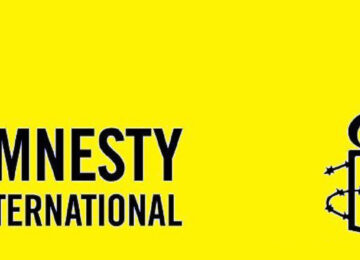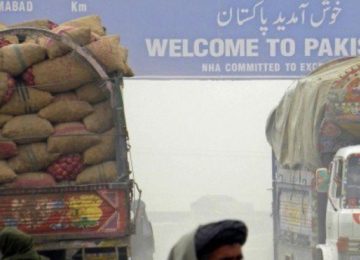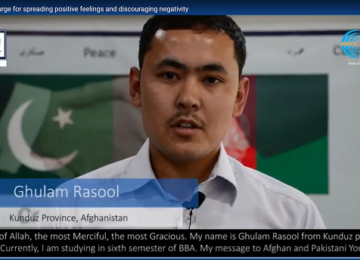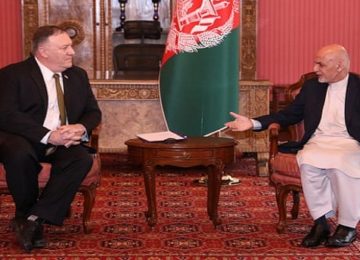In October 2017, Afghans experienced another particularly violent period. A series of high-profile insurgent attacks took place almost simultaneously in Kabul as well as in five provinces. Provincial and district centres were targeted, as well as ANSF installations and Sunni and Shia mosques. The overall number of people killed in these attacks is estimated to be over 200, with hundreds more injured. AAN’s Thomas Ruttig (with contributions from Fazal Muzhary and Ehsan Qaane) examines this latest spate of violence, putting it into the context of security trends so far this year. He concludes that there is no ‘stalemate’ in the Afghan conflict, as has been observed elsewhere. On the contrary, the situation remains extremely dynamic and volatile.
Within four days, between 16 and 19 October, the Taleban carried out a number of high-profile attacks on Afghan government forces installations and convoys in three major provinces: Ghazni, Paktia and Kandahar. Furthermore, gunmen attacked congregations in mosques in Kabul city and Ghor province. These attacks caused substantial casualties among both Afghan government forces and civilians, as well as extensive damage.
This latest wave of attacksbrought to an end a long,comparatively low-key and not overly successful Taleban offensive this year. (Each spring, after the Afghan New Year starts with Nowruz, the Taleban announce their annual offensive. This year’s was codenamed Omari, in memory of the movement’s founder Mullah Muhammad Omar.
One specific feature stood out in many of the attacks on the Afghan forces’ installations, which was that the use of US-made armoured Humvee vehicles captured from the Afghan forces, which the Taleban then turned into car bombs in order to breach military fortifications.
The latest wave of attacks: what happened and when?
16 October 2017: Andar (Ghazni)
The first attack took place on Monday 16 October, when the Taleban moved against Andar district centre, just outside the provincial capital of Ghazni. They attacked a police post near the district’s administrative compound and then the compound itself with car bombs. Ghazni’s governor, Abdul Karim Matin, said that during the attack a Humvee rigged with explosives was used as a driving bomb. (The Taleban subsequently sent a statement to the media, saying it was a normal lorry.) The insurgents were not immediately able to capture Andar’s centre, but laid siege to it. Three days of clashes followed, during which the Taleban briefly managed to capture the district centre but were quickly driven out by Afghan forces supported by US airstrikes.
At least 28 security personnel were killed and 18 others wounded during the fighting, according to provincial police chief General Mohammad Zaman Khosti. It is not clear whether this included the seven police killed when a reinforcement convoy headed to Andar was ambushed. At least five civilians were also killed. Khosti further claimed that 69 militants, including their “red unit” ‘special forces’ commander, had been killed and 17 others injured. Governor Matin spoke of 90 Taleban fighters and 22 security forces having been killed.
17 October 2017: Gardez (Paktia)
The next day, on 17 October, Taleban suicide bombers and gunmen stormed the police-training centre in Paktia’s provincial capital, Gardez, which also housed the police’s and the army’s regional headquarters. According to local sources, the attackers used captured unarmoured police vehicles (of the ranger type), which they filled with explosives in their first assault, followed by a similarly kitted-out Humvee during a second one. They killed at least 41 people, including provincial police chief Toryalai Abdiani, and completely destroyed the installation. The government had to promised to build a new one.
The attack happened in a province that had otherwise appeared to be relatively calm, except for fighting around the district centre of Janikhel in August (AAN analysis here) and an airstrike against insurgents in Ahmad Aba (sometimes called Ahmadabad) district, adjacent to Gardez, during which another Humvee captured by the Taleban was reportedly destroyed.
As a result of the Gardez attack, the total number of casualties, including attackers and civilians, was estimated to be over 80 dead and some 200 wounded. This is not the first time the training centre has been targeted. In mid-June 2017, it was hit by a so-called ‘complex attack’, killing half a dozen security forces. The Afghan interior ministry described the 17 October attack as the “biggest terrorist attack” in 2017 – but there were more to come.
18-19 October 2017, Maiwand (Kandahar)
During the night of 18 and 19 October, the Taleban used two captured Humvees as vehicle-borne bombs to penetrate a major military base, Chashmo, just outside Kandahar city in Maiwand district. The attackers, reportedly dressed in security forces uniforms, overran the base, destroyed it completely and wiped out almost its entire garrison. Of those Afghan soldiers, 43 were killed, nine more wounded and six were still unaccounted for, assumed to have either been taken prisoner or to have defected.
Maiwand lies at the heart of the region, where the Taleban movement emerged in the mid-1990s. It is still one of its strongholds and the Taleban recently made further “inroads” here. (According to the terrorism watch blog, The Long War Journal, as early as in spring 2017, the Taleban controlled five of 18 districts in Kandahar province and heavily contested another four.)
On the same day, although much less widely reported, the Taleban used the same method – detonating a car bomb and then launching an infantry attack – to attack Jaghatu’s district centre in Maidan-Wardak province. They were, however, reportedly repulsed after several hours of fighting. By mid-September, the Taleban had already killed three consecutive police chiefs of this district, using road-side bombs.
20 October 2017: mosque attack in Kabul – an outlier; Dolaina (Ghor)
On 20 October, 56 people were killed by a gunman who first shot at worshippers at the Imam Zaman mosque in the predominantly Shia/Hazara-populated Dasht-e Barchi area of West Kabul and then detonated a bomb he had been carrying. This attack was an outlier in the series of Taleban attacks in October, insofar as it was claimed by the Islamic State Khorasan Province (ISKP), the Afghan affiliate of the group centred in the Iraqi-Syrian borderlands. (It was not an outlier in he context of this year’s general patterns of terrorist attacks in Kabul and elsewhere, often directed against the Shia minority and claimed by ISKP, see earlier AAN reporting here and here.)
On the same day, armed men stormed a Sunni mosque in Dolaina district in Ghor province, killing up to 30 people and injuring “dozens” more. Among the dead was a pro-government militia commander, reportedly linked to Jamiat-e Islami, who appears to have been the main target of this attack. It is not clear who was behind the attack, but it also fits into a known pattern. Commanders of similar militia groups (and other government dignitaries) have repeatedly been targeted in mosques or during other social gatherings across the country, where they are particularly vulnerable (see for example here or here; attacks on mosques – although frequent – are still considered taboo among mainstream Muslims). Ghor is known for its particularly confusing pattern of conflicts, involving insurgent groups and ‘freelancing’ militias, the dividing line between which is all but hermetic (see earlier AAN analysis here).
21 October 2017: Kabul
On 21 October, another suicide bomber struck in Kabul. He walked up to a minibus transporting trainees from the Daud Khan military hospital on their way home from the Marshal Fahim Military Academy near its entrance at the Qambar junction on Qargha Road in the northwest of the capital. His attack killed 15 cadets and injured many more (see BBC and Tolonews reporting).
Earlier the same day, at least three rockets were fired “at foreign facilities” in Kabul, apparently without causing any damage. While this is not new, it appears to form part of an increasing pattern of attacks, particularly against Kabul airport. An earlier, more prominent example came in late September 2017, when US defence minister James Mattis visited Kabul and, according to Afghan media, up to 50 rockets were fired from a house near the airport, which had apparently been rented by the Taleban. It remains unclear, however, whether this was done with previous knowledge of Mattis’ visit (which is not unlikely, given that the Taleban probably have informants even in western installations).
Earlier incidents
Large-scale Taleban attacks against Afghan government forces installations are all but unprecedented, however. This year has seen a series of such raids, which began as early as in April. Then, a ten-member Taleban commando reportedly using two Afghan national army vehicles with license plates from another province managed to enter an army base in the northern centre of Mazar-e Sharif, killing around 170 soldiers who were leaving the base’s mosque after Friday prayers (media reports here and here). The death toll could have been even higher. (Government officials reportedly privately admitted that releasing the actual death toll could undermine the morale of the Afghan army (see for example here).
Over subsequent months, similar attacks took place in the south. Each of them was smaller than the one in Mazar, but casualties added up to concerning numbers.
In May 2017, the Taleban raided Camp Achakzai, an Afghan army base in Shahwali Kot district in Kandahar province, reportedly killing 18 soldiers (media reports here, here and here). In late July, during an attack in Khakrez district, also in Kandahar, 40 Afghan soldiers were killed and many others wounded. In mid-August, at least seven people were killed in a suicide attack in Lashkargah and more than 40 others reportedly wounded, including security forces and civilians. On 28 August, at least 13 people were killed and 19 others wounded, once again including civilians and security personnel, in a suicide attack near Nawa district centre, when a suicide bomber targeted a armoured vehicle of the security forces. This followed the ANSF’s retaking of the district centre in mid-July; Nawa’s centre has remained under Taleban pressure ever since (see for example here and here).
In Farah, in the west of the country, there has been a similar series of such attacks (examples reported in the Afghan media here and here).
Analysing the attacks
‘Humvee bombs’ – a new tactic?
The use of ‘Humvee bombs’ in Andar, Gardez and Maiwand (and in other places – see below) has received much attention in both the international and Afghan media (see for example Reuters, the Los Angeles Times and Kabul-based 1TV). But it is in no way unprecedented.
Southern Afghanistan, and particularly Helmand province, saw a series of similar attacks in 2016 and 2017. This included attacks in early 2016 in the provincial capital, Lashkargah, nearby Babaji and Nowzad district (read here and here) and in Sangin district, in mid-2016 in Lashkargah again, in Gereshk district in July 2017)and in Musa Qala district in August 2017.
In neighbouring Kandahar province, a Humvee was also used during a so-called complex attack on an Afghan security forces base in Maruf district, killing at least 12 security personnel in late September 2017.
The exact number of Humvees captured by the Taleban is unknown. But as early as September 2015, Reuters quoted “officials” saying it was in the “dozens,” while the New York Times wrote in February 2016 “it could be more than 150,” including 50 to 100 in Helmand alone, over 40 taken during the Taleban capture of Kunduz in 2015 and 13 in Badakhshan.In October 2017, the Afghan defence ministry admitted it didnot know how many Humvees had been seized.
On 20 August, the deputy police chief of Farah province, Col. Muhammad Saleh Massud stated, according to an Afghan media report, that security forces had seized two Humvee vehicles from the Taleban after they had tried to storm Khashrud district centre, at the strategic Zaranj-Delaram highway. The insurgents were eventually pushed back after several hours of fighting. The US Army Times reported “strikes” by a US marines unit based in the Afghan south “to destroy stolen Humvees” in July 2017. The same outlet also reported, with US military personnel as its source, that “in areas of Uruzgan province, the Afghan National Army, or ANA, is afraid to conduct night operations” as the local Taleban have better night vision equipment.
Reactions to the new US policy and attempts to start peace talks?
The wave of attacks has been interpreted, for example, by the BBC (http://www.bbc.com/news/world-asia-41708357), as a possible response to the new US strategy in Afghanistan. Indeed, this upsurge of high-profile attacks came after US President Donald Trump announced his new strategy in August 2017 (AAN analysis here). This includes an increase of up to 4,000 of the US’s own troops, the expansion of the CIA’s involvement, Afghan special and paramilitary forces (AAN analysis here, here and here) – and an increase in pressure on the Taleban’s key ally, Pakistan. Furthermore, several high-ranking US officials – including CIA chief Mike Pompeo and foreign minister Rex Tillerson – have recently stated that US troops would stay at least until the Taleban came to the negotiating table and that the insurgents would not be given the chance to win militarily. The gap of almost two months between the Trump address and the upsurge of Taleban activity might reflect the time needed to prepare such attacks.
The wave of attacks also coincided with various recent attempts to start peace talks, such as the meeting in mid-October of the Quadrilateral Coordination Group – involving government representatives from Afghanistan, Pakistan, China and the US (but not of the Taleban) in Oman (see media report here). This initiative, which began in 2015, had faltered following the collapse of the Murree talks in August 2015 and after the Taleban did not react to an ultimatum issued by the group to come to the negotiating table within three months in February 2016.
The Taleban now stated they were “not interested” in this initiative (quoted here) but explained in a statement posted on their website on 29 September 2017 that they were not generally opposed to a peaceful solution: “Finding a peaceful solution to the Afghan problem was and is the policy of Islamic Emirate.” In the same statement they accused the government in Kabul of sabotaging the Taleban’s participation in other dialogue fora and had now “spread rumors about closing the [Qatar] office” which it called the movement’s only “authoritative organ” for conducting talks.
Technically, the meeting in Oman cannot be considered ‘peace talks’ but rather preparations in the hope of such talks.
In a second initiative, an Afghan media report said that a group of Afghan politicians not directly in government had been invited to meet Taleban representatives in Dubai this month (November 2017), with the involvement of the Pugwash Conference, an organisation that had been awarded the Nobel Peace Prize and which had earlier organised similar meetings (see AAN analysis here). (In contrast to earlier meetings, Pugwash denied that it was organising the event – noting instead that it was a mere participant.) Furthermore, the AP’s Kathy Gannon reported in August 2017, that “despite seemingly stalled peace talks“ the Afghan intelligence chief and the national security adviser were in regular contact with Taleban representatives, including “about the country’s constitution and political future.” She further stated that she had even seen “documents describing the conversations.” In previous years, such initiatives – as well as US political pressure on Pakistan – have often been accompanied by an intensification in high-profile terrorist attacks.
Ending a stalemate, retaking initiative?
So far in 2017, the Taleban have failed to capture any provincial capital or hold on to most of the district centres they captured temporarily. The Taleban have also lost a number of district centres captured earlier to Afghan forces, for example some in Kunduz and Nawa in Helmand (after holding the latter for nine months).
It also appears that the Taleban have demonstrated a lower degree of military coordination in some parts of the country, as AAN reported from Kunduz province. This is the result of an increase in the number of night raids, drone and other air strikes that have taken out many mid-level commanders and fighters. Therefore, the wave of ‘Humvee attacks’ may simply be the attempt by the Taleban to counter the impression that they have lost momentum.
This has led a number of observers talking about a “stalemate.” This includes the US Special Inspector General for Afghanistan Reconstruction (SIGAR) who used this term in his most recent reports – which are largely based on US and NATO military sources (see here, p12 and here, p4). A classified German assessment of the security situation in Afghanistan issued in July 2017 and seen by the author mentions that this is the official NATO assessment which has become – and remains – the official language of western actors in the country.
Given the Taleban’s territorial gains between late 2015 and 2016, the movement has indeed been less successful in 2017, particularly during the first half of the year. While between November 2015 and November 2016, as the SIGAR reported in his first 2017 report issued in February (p58), the Afghan government lost 15 per cent of its previously held territory to the Taleban, his July 2017 report noted that “The number of districts under the control of the government … appears to have stabilized at 59.7%, the same as last quarter.”
This changed in the subsequent three months because of new Taleban gains, as the new SIGAR report, published on 30 October 2017, reflected:
As of August 2017, there were 54 districts [of 407] under insurgent control (13) or influence (41), an increase of nine districts over the last six months [up from 11 and 34 in May 2017, plus 122 “contested” districts]. (…) The Afghan government’s district and population control deteriorated to its lowest level since SIGAR began analyzing district-control data in December 2015 and population-control data in September 2016. (2)
As a result of this development, the SIGAR stated:
3.7 million Afghans (11.4% of the population) live in districts under insurgent control or influence (…), while another 8.1 million people (24.9%) live in areas that are contested. (…) The majority, 20.7 million (63.7%), still live in areas controlled or influenced by the government…
Even when there were no large-scale attacks, small-scale fighting took place on an almost daily basis throughout the spring and summer and now into autumn, and often in a number of provinces, simultaneously. This fighting only occasionally made it into the media, but it is reflected in the high number of Afghans displaced by conflict. By mid-October, UNOCHA had registered almost 300,000 new IDPs in 30 of the 34 Afghan provinces, while all 34 provinces host IDPs. There was larger-scale displacement only in 2015 (470,000) and 2016 (almost 600,000) (see AAN reporting here).
Sometimes, small-scale fighting turned into larger-scale fighting. Apart from the south and Kunduz, this was the case in Farah, Parwan, Paktia and Paktika – almost all of it underreported.
In Parwan province, which adjoins Kabul province, the Taleban twice attacked Siahgerd district centre, the first time being in August, and there was sporadic fighting in the area throughout that month. During the second attack, which took place in late September, the Taleban mobilised fighters from three provinces and made their way into Fanduqistan valley – a side valley of the Ghorband in Parwan (earlier AAN analysis here) – and marched on Siahgerd again from there. It took three days of fighting and reinforcements sent by the government to push them back. Occasional clashes were reportedly ongoing in late September as well as into October, indicating that the district was still vulnerable to a Taleban takeover. Meanwhile, in nearby Shibar district in Bamian, there were reports of a Taleban attack, a rare occurrence in this province. It was apparently part of the Taleban’s Siahgerd operation, with the aim of cutting off one route (from Bamian) for government reinforcements.
Even heavier and more consistent fighting (also underreported) took place in the more remote province of Farah which borders Iran. Its provincial capital, also called Farah, almost fell to the Taleban three times over the course of the past 12 months, according to the Guardian, for the first time as early as in December 2016. The province has a warm climate, so there is no winter lull in fighting. Farah further saw a brief Taleban takeover of Shebkoh (Qala-ye Kah) district centre in mid-October and two earlier attempts on Khashrud in December 2016 as well as in August this year. Heavy fighting was also reported in Bala Boluk district. The Long War Journal recently assessed that of Farah’s 11 districts, five are under Taleban control and three more heavily contested; it reported more recently that “hundreds of Taleban fighters gather[ed] in the open unopposed” in Bakwa district. (1)
Farah – together with Lashkargah (Helmand), Tirinkot (Uruzgan) and Kunduz – belongs to a group of provincial capitals that the UN, in its special representatives’ report to the Security Council, mentioned as being under heavy pressure by the Taleban. Reporting by AAN and others has shown that there is a similar situation in Sarepul, Faryab and Ghazni as well as repeated fighting in the vicinity of Baghlan’s provincial capital, Pul-e Khumri.
In mid-August, there was another large-scale and underreported Taleban attack on the district centre of Gomal in Paktika in the southeast. Fighting went on for four days, after which the attackers were eventually subdued by government forces and suffered heavy casualties. Almost simultaneously, the Taleban were temporarily able to take over Janikhel’s district centre in neighbouring Paktia, leading to a period of protracted fighting in the area (AAN reporting here).
Although most district centres captured by the Taleban in 2017 have been quickly recaptured by Afghan forces (the SIGAR report notes that recaptures have been quicker on average than last year, p.83), the fact that they were taken at all, and then had to be retaken with considerable effort, indicates that the Taleban still have the military initiative in many parts of the country. Furthermore, while the Taleban may have lost control of certain district centres, they often still control large parts of those districts. For example, as reported by the SIGAR (and based on US military information), this is the case in five of seven of Kunduz’s districts where the Taleban currently do not hold any district centre.
Conclusion: The stalemate is only statistical
The latest wave of Taleban attacks in October 2017 was an attempt to regain momentum and compensate for the fact that their permanent territorial gains remained scarce throughout 2017. But, as the trend between May and August 2017 showed, it is too early to speak of a stalemate. A number of facts speak for this.
First, as shown above, several provincial and districts centres continue to be on the brink of collapse. The 2017 trend in terms of territorial control represents a consolidation of the Taleban’s 2015/16 gains on a higher level then ever before since 2001.
Secondly, fighting is still highly intense. The latest UN report on Afghanistan to the Security Council (published in September 2017) stated that, “The conflict continued unabated throughout the country.” The UN further registered a “record level of armed clashes” during 2017. Subsequently, levels of civilian casualties and IDPs remain high. The same goes for the number of casualties within the Afghan National Security Forces (ANSF), ie the army and the police.
After ANSF losses of 8,146 dead and 14,278 injured in 2016 according to unpublicised NATO figures seen by AAN, the SIGAR July 2017 report noted 2,531 more ANSF dead and 4,238 injured between 1 January and 8 May 2017 alone. The 2016 figures amounted to 61 casualties a day, double that of UN-registered civilian casualties. The SIGAR called this casualty rate “shockingly high“, “unprecedented” and “unsustainable”, adding that figures provided to the US military by the Afghan authorities might still be “inaccurate,“ but this most likely meant “underreported.”
In the introduction to his latest report, the SIGAR reveals that US forces in Afghanistan have, at the Afghan government’s request, “classified or otherwise restricted” information about the ANSF’s performance “such as casualties, personnel strength, attrition, capability assessments, and operational readiness of equipment.” Afghan media and individual Afghan journalists reported about 800 ANSF dead in September and 1,800 in October, which would amount to another rise in casualty figures.
Third, the wave of attacks has demonstrated that the Taleban are still capable of mobilising large numbers of forces across provincial borders and carrying out simultaneous attacks in various provinces. The substantial increase in both US and Afghan airstrikes has not deterred them. (According to US sources, the number of US airstrikes in Afghanistan was 50 per cent higher in September 2017 compared to those in August 2017, and, in absolute numbers, the highest since the battle of Sangin in 2010; media report here.) These attacks, most of which have been carried out by the Taleban, have also showed that they are, militarily, still far more significant than ISKP.
Fourth, the October wave of attacks was not the first this year. It was preceded by an earlier wave in the south and west of the country and by the “black week” in Kabul in late May/early June, which included the 31 May suicide blast that destroyed the German Embassy and killed scores of Afghan civilians. (For this incident, no group has yet claimed responsibility (see the AAN discussion of this issue here).
If this situation represents a stalemate, it is a highly volatile and dynamic one. In any case, as one of the observers who used the term “stalemate”, Anthony Cordesman of the Washington-based Center for Strategic and International Studies (quoted here) added, this is “a stalemate that favors the insurgents.” In his latest report, the SIGAR also borrowed the UN’s expression of an “eroding stalemate.” Given all sides’ readiness and ability to increase fighting even further, there is no guarantee that this “relative” stalemate will hold.
Edited by Sari Kouvo
AAN will look at some of the Taleban operations mentioned in this text in more detail over the coming weeks.
(1) The Long War Journal uses the following criteria:
A “Contested” district means that the government may be in control of the district center, but little else, and the Taliban controls large areas or all of the areas outside of the district center. A “Control” district means the Taliban is openly administering a district, providing services and security, and also running the local courts.
(2) In the SIGAR terminology, ‘insurgency influenced’ stands for ‘predominantly controlled’. There are also ‘contested districts’, ie with both sides in a kind of balance. It was not clear, the SIGAR explained, “whether these districts are at risk or if neither the insurgency nor the Afghan government exercises any significant control over these areas.” Their number, according to SIGAR’s latest report, has remained “mostly unchanged” over the past months.
About the methodology, the SIGAR reported in its April 2016 quarterly report (p95, with a table on p96 with further detail):
According to USFOR-A [US Forces in Afghanistan], the RS mission determines district status by assessing five indicators of stability: governance, security, infrastructure, economy, and communications.
By Special Arrangement with AAN. Original link.
Disclaimer: Views expressed on this blog are not necessarily endorsed or supported by the Center for Research and Security Studies, Islamabad.








